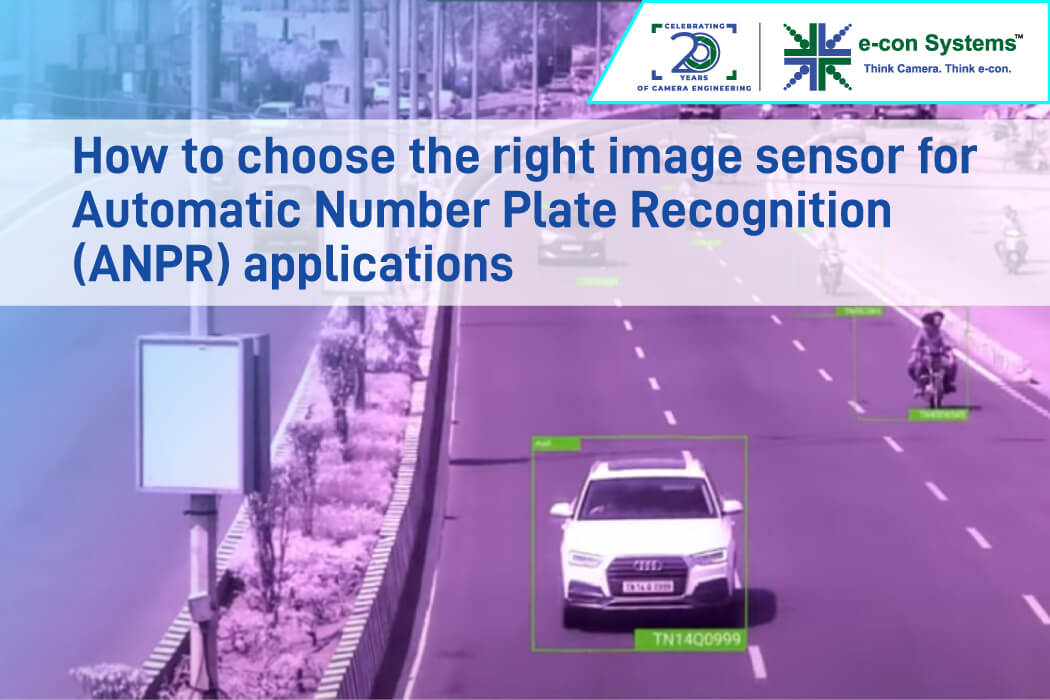Automated Number Plate Recognition (ANPR) systems have transformed the efficiency of ‘on the road’ monitoring and security solutions. The US Department of Justice even says that “93% of police departments in cities with populations of 1 million or more use their own ANPR systems, some of which can scan nearly 2,000 license plates per minute.”
It goes to show the valuable role of ANPR in ensuring the security of citizens while streamlining the real-time flow of transport.
In this blog, let’s find out more about ANPR systems, how they work, why they’re so useful, and how to choose the perfect camera.
What Does Automatic Number Plate Recognition (ANPR) Mean?
ANPR technology is based on advanced camera solutions that identify the letters, symbols, and colors of vehicle registration plates to collect insights like vehicle number, location, travel patterns, etc., in real time. It harnesses the power of Optical Character Recognition (OCR) to convert images into digitally processed data. This makes them crucial for traffic management, security, toll collection, and law enforcement applications.
ANPR systems basically integrate specialized cameras with computer vision algorithms to identify and process number plates, even in challenging lighting or weather conditions. Leveraging advanced image processing techniques, they can rapidly identify plates from moving or stationary vehicles. These systems can be easily embedded into existing security infrastructure or deployed as standalone systems.
Here are some of the use cases driven by ANPR technology:
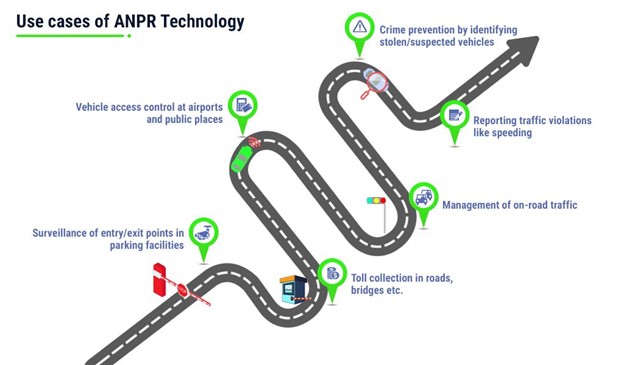
Key Features of Automatic Number Plate Recognition (ANPR)
- Real-time processing: Embedded processors allow immediate recognition and data conversion for real-time vehicle tracking and identification.
- Accuracy: Advanced computer vision algorithms deliver high accuracy in varying conditions, such as different lighting or extreme weather.
- Data-rich: Embedded vision enables the collection and analysis of data from ANPR systems for actionable insights into traffic patterns, security trends, or operational efficiencies.
- Flexibility: ANPR systems can be adapted for different use cases, such as toll booth automation, parking management, and security surveillance.
Is ANPR the Same as ALPR?
For all practical purposes, ANPR (Automatic Number Plate Recognition) and ALPR (Automatic License Plate Recognition) are the same technology. The terms are used interchangeably based on regional preferences. ANPR is more commonly used in the UK and Europe whereas ALPR is used in the United States and some other regions.
Both refer to systems that use computer vision and OCR to read and analyze vehicle license plates automatically.
Read: ANPR with e-con Systems’ global shutter camera and Raspberry Pi 4
3 Considerations for Choosing the Right Camera for ANPR Systems
ANPR systems require zero human intervention, as the sensor captures images of vehicles on the road—from fast-moving vehicles that break violations to slow-moving ones that enter and exit parking lots. Hence, choosing the right image sensor for number plate recognition must be carefully done.
Also, motion blur and the rolling shutter effect are two huge challenges that number plate recognition applications have to overcome. Otherwise, it would be impossible to capture the number plate characters of the vehicle in motion. Other challenges include varying lighting conditions, headlight glares, and harsh environmental conditions.
Hence, if you want to stay on top of these challenges while selecting the perfect camera and sensor, you should consider these three crucial factors.
Shutter Artifacts
There’s no debating that the cameras used in ANPR must capture images without any distortion or skew. If you use a rolling shutter sensor, that will produce artifacts in the output image, making the characters in the number plate virtually unrecognizable. However, with a global shutter, the camera exposes the sensor simultaneously, enabling it to capture a fast-moving image in its entirety – that too, without any artifacts. It means that you will be able to produce images of moving vehicles without any distortion.
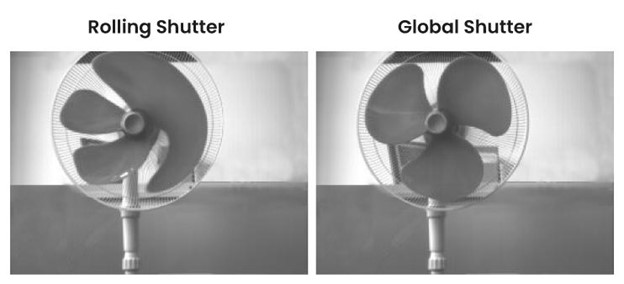
Exposure Time
As you may already know, camera exposure sets the parameters for how sharp or blurry a captured image can be. When it comes to ANPR systems, the exposure time should be dictated by how much light tends to illuminate the vehicle’s number plate and its speed. A well-lit number plate can be captured with a low exposure time.
It also helps to ensure that a frame is captured fast enough to reduce any motion blur that could potentially occur due to the vehicle’s speed. Also, given that the environment in which these cameras are installed is subject to unpredictable lighting conditions, the sensors should be equipped to adapt to varying exposure conditions.
Dynamic range
Another critical factor in effectively capturing number plate information is to ensure that a heavy headlight does not bleach the image. It would hinder Optical Character Recognition (OCR) – making the vehicle’s number plate a lot less recognizable. A sensor with a good dynamic range can go a long way to capture the information on the plate without overexposure due to the surrounding headlight.
Take a look at this comparison to understand the difference between the image output of a normal camera and an HDR camera.
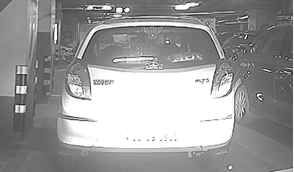
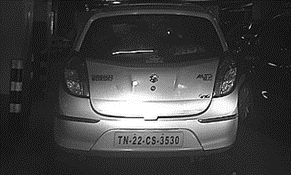
Read: What is an IR-cut filter – and why do ANPR systems need it?
Popular Applications that Use ANPR Technology
Law enforcement and security
Police departments utilize ANPR systems to automatically identify stolen vehicles, track wanted criminals, and enforce traffic laws. Security agencies also employ it for monitoring vehicles accessing restricted or secure areas.
Toll collection
Automated toll systems use ANPR technology to recognize vehicles and apply charges without requiring them to stop.
Parking management
ANPR is implemented in parking lots to allow vehicle entry and exit while automatically calculating fees based on the length of stay. It helps automate parking operations, reducing human error in parking enforcement.
Traffic management
ANPR systems empower traffic authorities to collect data on vehicle flow and analyze patterns. It results in informed traffic management decisions while providing authorities with actionable data for enforcement.
Fleet management
Logistics companies use ANPR to monitor their fleets, enabling them to track driver behavior and ensure compliance with company policies. It optimizes routes, reduces operational costs, and boosts operational speed and reliability.
| Note: If you’re particularly interested in how ANPR is transforming toll collection and improving traffic flow, don’t miss our blog: Role of AI-Powered ALPR Cameras in Automated Toll Collection and Traffic Flow Management – where we explore camera challenges and solutions in dynamic highway environments. |
e-con Systems Provides Cutting-Edge Cameras for ANPR Systems
e-con Systems has 20+ years of experience in designing, developing, and manufacturing OEM camera solutions for all popular use cases, including Automated Number Plate Recognition (ANPR). Through the years, we have also demonstrated an impressive track record in offering customization services such as form factor changes, zoom capabilities, lens mount modifications, and tailored enclosure designs.
Our top cameras for ANPR systems include:
- See3CAM_24CUG – Global Shutter USB3 Camera
- See3CAM_20CUG – Global Shutter Monochrome USB3 Camera
- See3CAM_50CUG – Sony® Pregius IMX264 Monochrome/Color USB3 Cameras
- e-CAM521_CUMI568C_MOD – 5MP Sony Pregius S IMX568 Global Shutter Camera
- See3CAM_27CUG – 2MP OV2312 Global Shutter RGB-IR USB 3.2 Gen 1 Camera
Please browse our Camera Selector Page to check out our full portfolio.
If you require expert assistance to find and integrate the best-fit camera into your ANPR system, please write to camerasolutions@e-consystems.com.




